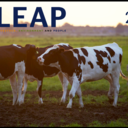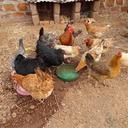New report on alternative proteins from the World Economic Forum: Meat the Future series

New report on alternative proteins from the World Economic Forum: Meat the Future series
Date posted: 03 January 2019
Alternative proteins that can act as substitutes for traditional animal‑based food are attracting considerable financial investment, research attention and interest in the media as a pathway to meeting the nutritional needs and food demands of a predicted mid‑century population of 10 billion, in a healthy and sustainable manner. Many of these potentially disruptive alternatives are enabled by the Fourth Industrial Revolution and come with big promises – from reducing greenhouse‑gas emissions to transforming nutrition and health.
This report investigates these claims using a food‑systems lens. Employing quantitative models developed by the Oxford Martin School, the analysis shows that a wide range of protein alternatives can have important environmental and health benefits. The report illuminates sensitive intervention points at which multistakeholder discussions and new platforms for public‑private collaboration are needed. It also notes gaps in knowledge, where further exploration will be required.
An important finding of this research is that showing the benefits of these products is not sufficient for consumers to adopt them. A much wider set of interventions will be required to accelerate uptake.
To this end, the analysis in this report first uses social science techniques to look at a critical determinant of adoption: the interplay of narratives that are developing in regard to the costs and benefits of alternative proteins. Chiefly using information from North American and European markets, where alternative proteins are more advanced and available, the report seeks an understanding of which narratives have been most impactful or detrimental in affecting the acceptance and purchase of these products.
Next, the assessment focuses on the political economy and regulatory environments that can support such a transformation, recognizing the critical role these elements play in the food system. Finally, the analyses are brought together to present recommendations on multistakeholder actions that may be required to accelerate adoption of beneficial alternatives, and to minimize the negative impact from the disruption of current protein delivery systems.
An important conclusion from the report is that for the foreseeable future the meat and protein alternatives industries will coexist and that, as a result, there are great opportunities for synergies. Indeed, it is unlikely that alternative proteins will achieve scale unless use is made of the production and marketing expertise of the traditional protein sector.














